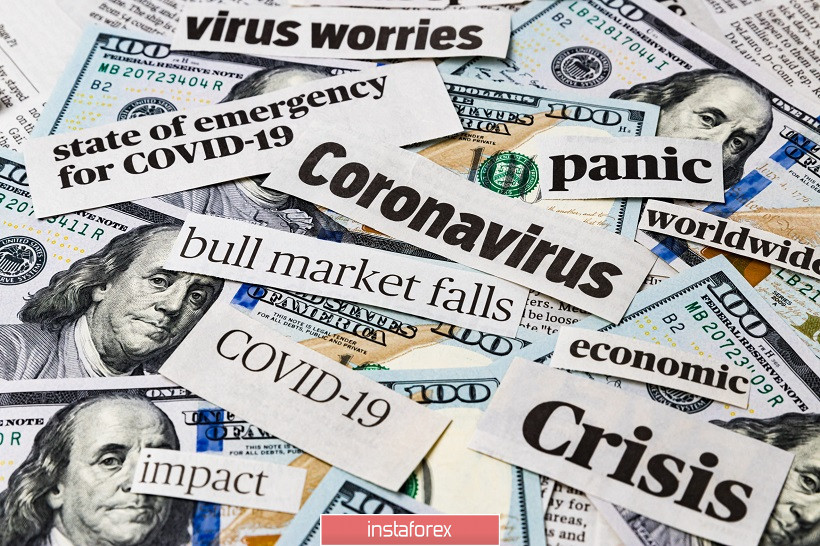The greenback has been trying to get back its status of the favored safe haven this week. The coronavirus pandemic has once again become the central topic for traders since optimism about the development of Pfizer's COVID-19 vaccine shattered due to the alleged problems with the distribution of the drug. Meantime, COVID-19 continues its march around the world, "closing" the economies of many countries - primarily European ones - on its way. There has been another record number of new infection cases in the United States. Nevertheless, Joe Biden's team, like Biden himself, are not in favor of a lockdown. The president-elect will be sworn into office only in January. Therefore, there would be no chances for the leader of the Democratic Party to introduce a lockdown even if he wanted to. At the local level, state governors for the most part also do not like the idea of rigid quarantine restrictions.

That is why the US dollar is still afloat, while the euro is brought under pressure due to record numbers of coronavirus cases in the EU countries. The recent trends suggest that key European economies will extend the national lockdown to December-January. It is also possible that in countries such as Italy, France, and Germany, the spring scenario will unfold again. Back then, these countries implemented the toughest restrictions possible to prevent the spread of the deadly virus.
In Italy, deaths have hit another record since April. At the same time, almost 33 thousand new daily coronavirus cases were registered in the country. The local Ministry of Health has already warned that hospitals do not have enough medical personnel in addition to a limited number of spare hospital beds. Most likely, the country will introduce a nationwide lockdown on November 15. The coronavirus situation in Germany also raises concern. The daily rate of COVID-19 infections in the country has climbed to a record level for the second consecutive day. According to Chancellor Angela Merkel, the second wave of the pandemic will be more severe. Merkel warned German citizens to expect 'difficult months ahead'. The Chancellor also suggested that the coronavirus crisis would continue all winter, while the current success in the vaccine trial would not change anything.
In France, despite the curfew imposed several weeks ago, the daily increase in the number of coronavirus cases remains high. In the past 24 hours, 36 thousand patients were diagnosed with COVID-19. A record daily increase in coronavirus cases was recorded in Greece - almost 3 thousand people (with a population of 10 million). The Minister for National Defence of Greece has already announced the tightening of restrictive measures. Tomorrow, a curfew will be imposed in the country.
All these facts indicate that quarantine restrictions in Europe will last longer than November. At the same time, nobody knows for sure how long it will take to stop the pandemic. Such gloomy prospects raise concerns among the ECB policymakers. A study published yesterday by the regulator indicates that, for example, in Spain, one in seven employees works for a company that is on the verge of collapse. In Germany or France, this figure is about 8% of the total number of employees and 10% in Italy. In general, the European Central Bank pointed out drastic conditions of the Spanish economy due to its dependence on tourism and the growing number of coronavirus infections. The ECB's experts estimated that the Spanish economy is 9% lower than before the pandemic. This is the worst result among the eurozone countries.

Yesterday's speech by Christine Lagarde put the euro under additional pressure. Even though she said nothing new, her pessimistic rhetoric reminded traders that the current quarantine restrictions would soon affect key macroeconomic indicators in the euro area.
However, despite the negative fundamental background for the euro, bears failed to develop the downward movement. Right before the close of yesterday's trading, the bearish pressure eased. Today, the pair is trying to regain its losses. All this indicates the vulnerability of the US dollar. The greenback is in demand from time to time. However. it cannot take full advantage of its position. For example, yesterday appetite for risk decreased due to the Pfizer vaccine but the situation changed when it turned out that the drug includes messenger RNA to activate the immune system against the virus. For this reason, it must be stored (and therefore transported) at -70 degrees Celsius or below. At the same time, it can be removed from this cold environment no more than four times. Such stringent requirements can lead to serious logistics problems. According to experts, even in Europe, the distribution of the vaccine will be a very difficult task, not to mention the global scale.
And yet, despite such a fundamental background, the greenback failed to get back its status of the favored safe haven in the foreign exchange market.
Therefore, in my opinion, long positions on EUR/USD can still be considered. The first target for the upward movement is at 1.1820 (the upper border of the Kumo Cloud on the daily chart). The main target is located higher. It is a psychologically important level of 1.1900 (the upper line of the Bollinger Bands indicator on the daily chart).





















